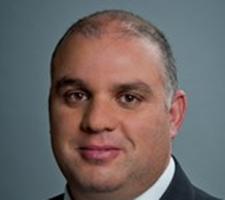
Shay Soffer, Chief Scientist with the Israel National Road Safety Authority, talks to Jason Barnes about his country’s current ITS outlook and how he sees this developing in the future.
Israel ranks alongside countries such as the US and France in the road safety stakes, with an average 7.1 deaths per billion kilometres driven. But at that point the similarities end, as the country’s overriding issue is pedestrian safety. This is driven by several factors, including being a relatively small country where people tend not to travel great distances, low levels of international (transiting) road traffic, comparatively low levels of car ownership and an under-developed mass transit system.That fatality rate is something which Israel is struggling to reduce, says Shay Soffer, Chief Scientist with the Israel National Road Safety Authority.
“Our aspiration is to be more like the Scandinavian countries, where the number of deaths per billion kilometres is around the four or five mark but, quite simply, our infrastructure is not well suited to pedestrians. That means we see a lot of people on foot out on the street where vehicles are. We don’t have a very well-developed public transport system – we have very few trains and trams, for example – and the preponderance of public transport is bus-based. That puts people and buses in the same spaces, which is a very unhealthy mix. Statistics show that even a relatively low-speed collision, around 30km/h, is usually fatal.”
National ITS progress
When it comes to ITS the country is, he says, playing catch-up. Major national ITS projects include Highways 6 and 431, both high-speed toll roads. Highway 6, which runs for 140km north to south, is the country’s eastern-most strategic road and allows users to bypass the congested Tel Aviv region. It uses the same transponder and video technology as Canada’s Highway 407, which was equipped byCities such as Tel Aviv and Haifa are starting to make appreciable changes and implement mass transit in a more meaningful sense and in the longer term there are mass transit implementations under way. Work has been done to implement applications such as real-time travel information and smart card/smart ticketing is also very well embedded.
Safety initiatives
“Historically there just hasn’t been a perceived need but that’s changing rather quickly,” Soffer continues. “On the pedestrian safety side, we’ve been developing and starting to deploy some innovative solutions. These include a radar-based pedestrian detection system which emits a very loud warning sound when people stray into the paths of buses. Future developments will also provide in-cabin warnings to drivers.“Over the last couple of years we’ve been very actively using digital enforcement systems to target aggressive driving – not the people driving 10-20% over the limit but those who’re going at 40-50% over.
As in other countries, local conditions drive developments. Long-distance commutes are uncommon whilst mild weather (Israel enjoys temperatures of around 25oC (ca. 77oF) for most of the year) results in bicycles and motorised scooters being popular. Cars and larger vehicles are more common in the north and south of the country, which are relatively less well developed. The Far East supplies most of the national fleet, with Mazdas and Hyundais being especially popular. European marques are less common but Ford has a notable presence. For tax reasons, 1.6-litre sedans with automatic transmission tend to be the vehicle of choice.
In terms of driver safety, Soffer hopes that eCall can be a catalyst and his organisation is encouraging greater take-up of lane departure warning and front collision warning systems. In-Vehicle Data Recorders (IVDRs) – so-called ‘black boxes’ – have formed the basis of a national driver training/awareness programme.
“IVDRs allow us to apply a lot of effort to improving individual drivers’ skills because we can show them where their driving habits are dangerous or need improvement – how they may be taking bends too fast, braking too late and so on. In particular we target young drivers and fleets. We also collaborate with the military to improve soldiers’ driving.”
Technology potential
While Israel does not have a large manufacturing sector, Soffer sees areas where its systems developers can make up ground.“We don’t have a strong ITS manufacturing sector at present. What we do have is a very strong military technology manufacturing base which produces some world-leading systems. We’re especially strong in camera and surveillance technologies and have a good base of technologically competent people with a track record of innovation. Military technology tends to be very expensive both because of the need for absolute performance and needing to be ruggedised. It needs to be made much less expensive if it’s to be competitive in a civilian setting.
“Nevertheless, I can see several areas where civilianised solutions which sit somewhere behind the military cutting-edge could emerge really quite quickly. Israeli companies need to expand their horizons because the domestic market is relatively small but I see major opportunities in the automated enforcement and general traffic monitoring sectors in particular. The pedestrian bus warning system is a very good example of the encroachment of military or paramilitary surveillance technology into the civil sector.
“Another area with potential for exploitation by domestic companies is in-vehicle systems. Vehicle-to-Vehicle [V2V] and Vehicle-to-Infrastructure [V2I] systems are already on the national ‘radar’ as a result of our international cooperation efforts and while we’re not so strong in the vehicle area as we don’t have a national manufacturing or assembly capacity we are very strong – again, through our military base – in technologies for head-up displays, for instance.”
An area which might be seen as offering potential, given the volatility in the Middle East, is security. However, Soffer says that there is less to be gained than there might seem to be at first sight.
“Bombings on public transport were an issue – and, unfortunately, they’ve become an issue internationally in recent years. But countering terror has to be seen as something on the periphery. Intelligence is the key, in that you want to have addressed the issue of a potential bombing long before an individual carrying a device gets anywhere near a bus, tram or train. There are lots of public and crowded places which I think in the future can lean on airport-style security, gates and so on, but a fundamental of public transport is free, easy movement and the quality of life which that confers.”
The future
Israel tends to follow policy leads set by Europe and the US, although it is the former which tends to have the greater influence in many respects.Soffer: “We see ourselves as a part of the EU and we’ve also, relatively recently, become an OECD member. We cooperate with Europe and most of our regulatory frameworks are based on European models – for instance, we’ve embraced European safety policy and rules on licensing and vehicle registrations. We’ve a lot of role models there, particularly the French and the Dutch.
“Despite our relative youth we already have an ITS roadmap out to 2020. That includes V2V and V2I systems, eCall and smart roads. ITS Israel has been active in helping to develop both the roadmap and a national architecture.
“A decade from now, I expect things to have developed dramatically. Both our government and citizens are open to technology and we’re on the verge of significant change with the adoption of electric and, eventually, hydrogen-powered vehicles. I anticipate there being a lot more electronic capability in vehicles and new sensor technology, and that’ll result in semi-autonomy in the not-too-distant future.
“Traffic control is very well developed in urban areas because of the deployment of large numbers of cameras. There’s a need for more formalised traffic management in some respects but at present we’re something of an island – we experience very little international road traffic. In time, I hope that situation will improve but in the meantime private-sector smart GPS/smart phone apps such as waze are filling the gaps and being used very enthusiastically by individuals and businesses alike.”
Making ITS a national affair
ITS Israel was formally instituted in 2008 as a not-for-profit organisation staffed by volunteers and currently has around 60 organisations as members. It has achieved advisory status with the Knesset, Israel’s parliament, advising committees on traffic and transport matters as well as others such as child safety, where ITS technologies can save lives and protect wellbeing.
Ur Omry, the association’s Chairman, describes ITS Israel’s membership as including “a little of everything”.
“We have a lot of small, high-tech companies, suppliers of in-vehicle data recorders and navigation solutions, academic institutions and city jurisdictions. We also have a number of traffic and road engineers, as well as road operators, such as those from Highway 6, Ayalon Road and Netivey Camel. That’s useful in the sense that the technology suppliers get to mix with those who can use their products and the road people get to know what the latest and best is in terms of making transportation work better.”
On the current topic of debate, control centres, he says: “Highway 6, the Cross-Israel Highway, was the location of the country’s first advanced control centre facility. This was installed 12 years ago and its traffic management technology remains effective.
However, Israel is a small, relatively crowded country and the debate is over whether we should have a large, national facility or a series of regional control centres. We need to do something because if we don’t address rising congestion we risk becoming just a huge car park.”
ITS Israel is also currently leading a project to demonstrate a web-based travel information system. This will provide, in addition to traffic information, data such as road closures due to planned work or major events, accidents, incidents and the like. The system will be demonstrated in Haifa and is expected to be ready in early 2014.












